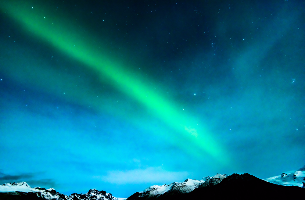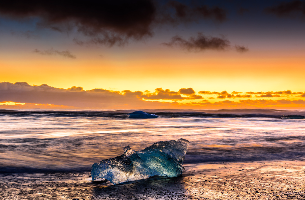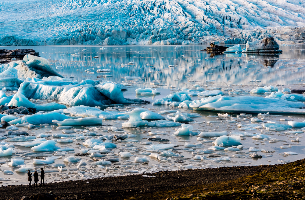Ice has a magical quality about it. In Iceland you'll find icebergs with all sorts of colours, from clear to white, blue and black, or even a mix. The colour will also change as the light hits it, so photographing icebergs backlit at sunset or sunrise can give you a completely different look. Choosing a custom white balance can also influence how you want the viewer to perceive your image, by creating a cool or warm tone depending on what you set.
One of The best places to shoot icebergs in Iceland is undoubtedly the black beach by the Jökulsárlón lagoon, where bergs are constantly calving from the Breiðamerkurjökull glacier. When photographing them, the thing to remember is that they move, so you'll need to set a shutter speed that gives you the creative edge you are looking for, whether this is a high shutter speed to freeze the motion, or a slow shutter speed to blur it. If a wave comes in there is a possibility that your iceberg will float on it, depend on its size, and this may introduce unwanted blur, so you might want to check that your chosen iceberg is large enough not to be moved by the waves. For the sharpest pictures, a tripod and remote release are highly recommended.
Icebergs come in all shapes and sizes, and images taken as abstracts either close up or against a contrasting background such as the black Icelandic sand make superb images. By changing your shooting angle, photographing from above or below the iceberg, you can make it seem far larger or smaller than it actually is. If you want to create interesting patterns, try a shutter speed of around 3-5 seconds, then release the shutter just as a wave breaks over the iceberg. As the water retreats from the beach and moves around the berg, the flow will be broken up into enticing leading lines around it.









